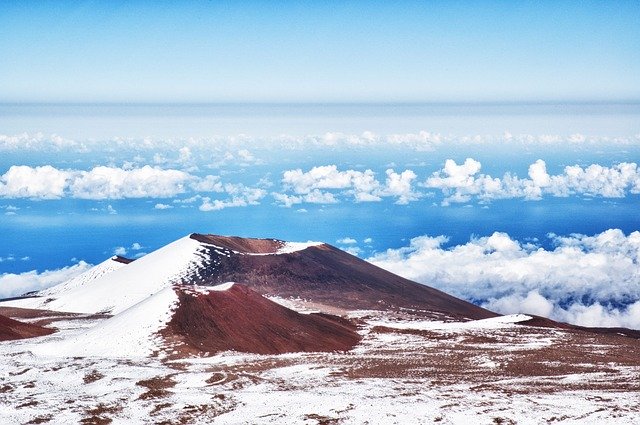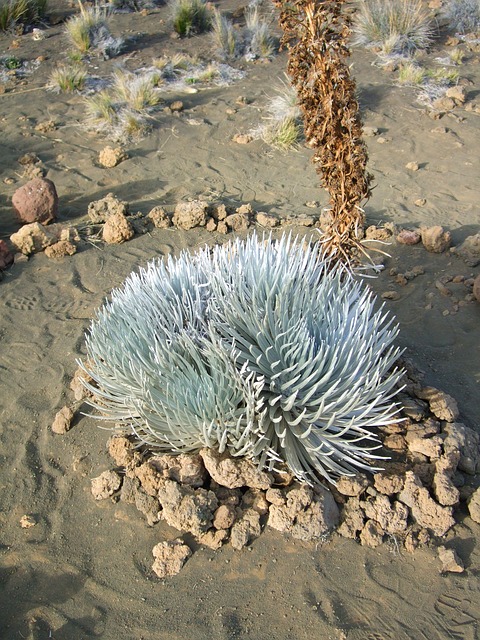SCB Opposes Construction of Thirty Meter Telescope (TMT) on Mauna Kea (Mauna a Wākea), Hawai'i
This article was updated on 21 February 2020.*
 |
|
Mauna Kea. By Adrian Malec, Pixabay. |
The Society for Conservation Biology, a global community of conservation professionals dedicated to advancing the science and practice of conserving the world's biodiversity and ecosystems, opposes the planning and approval process, and potential construction of the Thirty Meter Telescope (TMT), International Observatory on Mauna Kea (Mauna a Wākea), Hawai'i.
|
What does it mean to be for a place? In a paper published in Pacific Conservation Biology, Stephanie Borrelle et al draw on their experiences as early-career researchers working towards anti-colonial, just and inclusive approaches to conservation science and practice by discussing what it means to be for a place.
|
If built, TMT would cause deleterious and irreversible impacts to the unique and highly threatened socio-ecological alpine landscape within the Mauna Kea Science Reserve (MKSR)1 - the proposed site for TMT construction. The TMT Corporation, as well as the State of Hawai‘i Board of Land and Natural Resources, and Department of Land and Natural Resources, have all concluded in an environmental impact assessment that the TMT would exert “substantial, significant, and adverse” impacts on Mauna Kea’s ecological and cultural resources2. TMT would likely “[displace] existing species and habitat” and would disrupt the site’s geology4.
Mauna Kea is a rare, globally significant, and uniquely threatened habitat. At 4,200 m in elevation, Mauna Kea is taller than both Mt. Hood (Wy'east to the Multnomah tribe) and Grand Teton (Rock Standing or Elder Brother to the Shoshone). Warm, moist air rising from the tropical Pacific Ocean condenses and falls as rain or snow at the summit. Mauna Kea can be translated to “white mountain” in reference to this seasonal snow, which is increasingly uncommon due to climate change5. However, there are many names for the mountain, one of which is Mauna a Wākea, as the mountain is connected to the sky father deity of Hawai‘i, meaning that Mauna Kea is the place that connects Kānaka Maoli (Native Hawaiians) from their lands to their cosmic origins6.
The summit of Mauna Kea (where the MKSR is located) supports a fragile aeolian ecosystem (i.e., shaped by wind patterns), characterized by specialized primary producers (including mosses, algae, and lichens) and a unique community of arthropod predators and scavengers. Resident plant species of Mauna Kea include the endemic and endangered Mauna Kea silversword (Argyroxiphium sandwicense subs sandwicense7) and the native Douglas’ bladderfern (Cystopteris douglasii), listed as a species of concern8. There are at least 12 arthropod species endemic to the summit, including omnivorous, day-flying Agrotis moths, Lycosa wolf spiders, and the unique, flightless wēkiu bug (Nysius wekiuicola)9. Finally, another arthropod, a Lithobius centipede, is also found on Mauna Kea, however, there is uncertainty as whether the species is endemic - underscoring the critical need to evaluate the species status and habitat needs11. Further degradation of summit ecosystems—already impacted by existing development2 and climate change—may be irreversible: The endemic species of Mauna Kea have no alternative habitat.
The potential construction of TMT on Mauna Kea would follow decades of development that has already caused negative socio-environmental impacts, including significant ecological, cultural, and geologic environmental damage and desecration12 due to past mismanagement13. We acknowledge important work by the Office of Mauna Kea Management (OMKM), which has engaged the Kahu Ku Mauna, a group of Kānaka Maoli, in management decisions that have mitigated some conservation and cultural impact outcomes of the telescope projects. However, many other Native Hawaiian groups have not been formally included in the decision making process. Native Hawaiian organizations like the Mauna Kea Anaina Hou, the Royal Order of Kamehameha I14, and the KAHEA15, a Hawaiian environmental alliance, have openly opposed management decisions regarding their ancestral and sacred Mauna, as demonstrated through written opposition and the ongoing protests and occupation by groups of Kānaka Maoli. This lack of fully inclusive decision making for more than 50 years of telescope development threatens sustainable co-management of this incredibly unique ecosystem and marginalizes the intergenerational roles of Native Hawaiians as ecological stewards and caretakers of their traditional practices, burial sites, shrines, and heritage sites17.
 |
|
Silversword. Image from Pixabay. |
SCB recognizes the important and critical leadership role of Indigenous communities in global biodiversity conservation. Recent developments in conservation social science include the emerging field of conservation justice7. Research confirms that conservation interventions that are co-created with local communities under a justice and equity framework experience more successful, enduring ecological outcomes and resilient, grassroots community support8,9. Effective conservation efforts must include and respect Indigenous People’s relationalities to land, water, and resources. Scientific advancement should not take primacy to Indigenous rights and ways of knowing; rather, western science stands to benefit from Indigenous science.
Conserving the ecological and culturally irreplaceable ecosystems in the MKSR is incompatible with currently proposed development plans on the summit of Mauna Kea. We acknowledge the investment that many colleagues in the astronomy community have made toward the project and the scientific knowledge that may be gained from it. We write not to judge the scientific value of TMT, but to establish that because of its adverse ecological and cultural resource impacts as well as the exclusionary process by which is it being planned and approved, the construction of TMT as planned is misaligned with the principles of sustainable and inclusive scientific practices.
- Oppose the construction of the TMT and any further development on the summit of Mauna Kea, without the due and inclusive co-development of this and all other infrastructure plans with affected parties, including groups of the Kānaka Maoli, to avoid further adverse socio-environmental impacts on the fragile ecosystems and vulnerable species unique to the summit of Mauna Kea, and;
- Stand with Kānaka Maoli in their occupation of their unceded lands with the aim of supporting traditional stewardship of Mauna Kea, and;
- Urge the pursuit of pono (righteous) scientific development efforts of any kind on Indigenous lands to employ an inclusive process that includes all stakeholders, respects the past and present irreplaceable ecological and cultural value of natural resources, and integrates the role of Indigenous Peoples as stewards of their lands.
*This article was updated on 21 February 2021. Click here to view the tracked changes.
1 MKSR is land held in trust by the State of Hawai‘i and managed by the Hawai‘i Department of Land and Natural Resources (BLNR), parts are subleased to the University of Hawai‘i (UH; to 2033). https://bit.ly/2rhndVz
2 TMT Corporation Environmental Impact Assessment. 2010. http://www.malamamaunakea.org/uploads/management/plans/TMT_FEIS_vol1.pdf
3 TMT Management Plan, page 3-12. Similar statements are found in the FEIS and CDUA for the TMT project.
4 Zhang et al. 2017. https://agupubs.onlinelibrary.wiley.com/doi/full/10.1002/2016EF000478
5 http://www.mauna-a-wakea.info/maunakea/F2_whitemountain.html
6 https://ecos.fws.gov/ecp0/reports/species-listed-by-state-report?state=HI&status=listed
7 https://dlnr.hawaii.gov/dofaw/rules/endangered-plants/
8 Duman & Montgomery (1991) https://onlinelibrary.wiley.com/doi/abs/10.1002/jez.1402590318
9 Nishida, G. M. 2002. Hawaiian Terrestrial Arthropod Checklist 4th ed. http://hbs.bishopmuseum.org/pdf/tr22.pdf.
10 TMT Management Plan, page 3-12. Similar statements are found in the FEIS and CDUA for the TMT project.
11 KAHEA 2019. http://www.kahea.org/blog/kahea-testimony-on-omkm-rules?searchterm=mismanagement+of+the+Mauna
12 Mauna Kea Anaina Hou et al. 2010. http://www.malamamaunakea.org/library/reference/index/refid/755-testimony-in-opposition-to-the-tmt-project-conservation-district-use-application-the-university-of-hawaii-and-the-thirty-meter-telescope-observatory-corporations-conservation-district-use-application-cdua-ha-3568
13 KAHEA 2010. http://www.kahea.org/issues/sacred-summits/sacred-summits-documents/kahea-comments-on-tmt/at_download/file
14 https://www.commondreams.org/views/2019/08/27/protectors-mauna-kea-are-fighting-colonialism-not-science
15 Martin, et al.. (2016). https://www.sciencedirect.com/science/article/pii/S0006320716301045
16 Sikor, et al. (2014).https://conbio.onlinelibrary.wiley.com/doi/pdf/10.1111/conl.12142
17 Oldekop, et al. (2016) https://conbio.onlinelibrary.wiley.com/doi/10.1111/cobi.12568